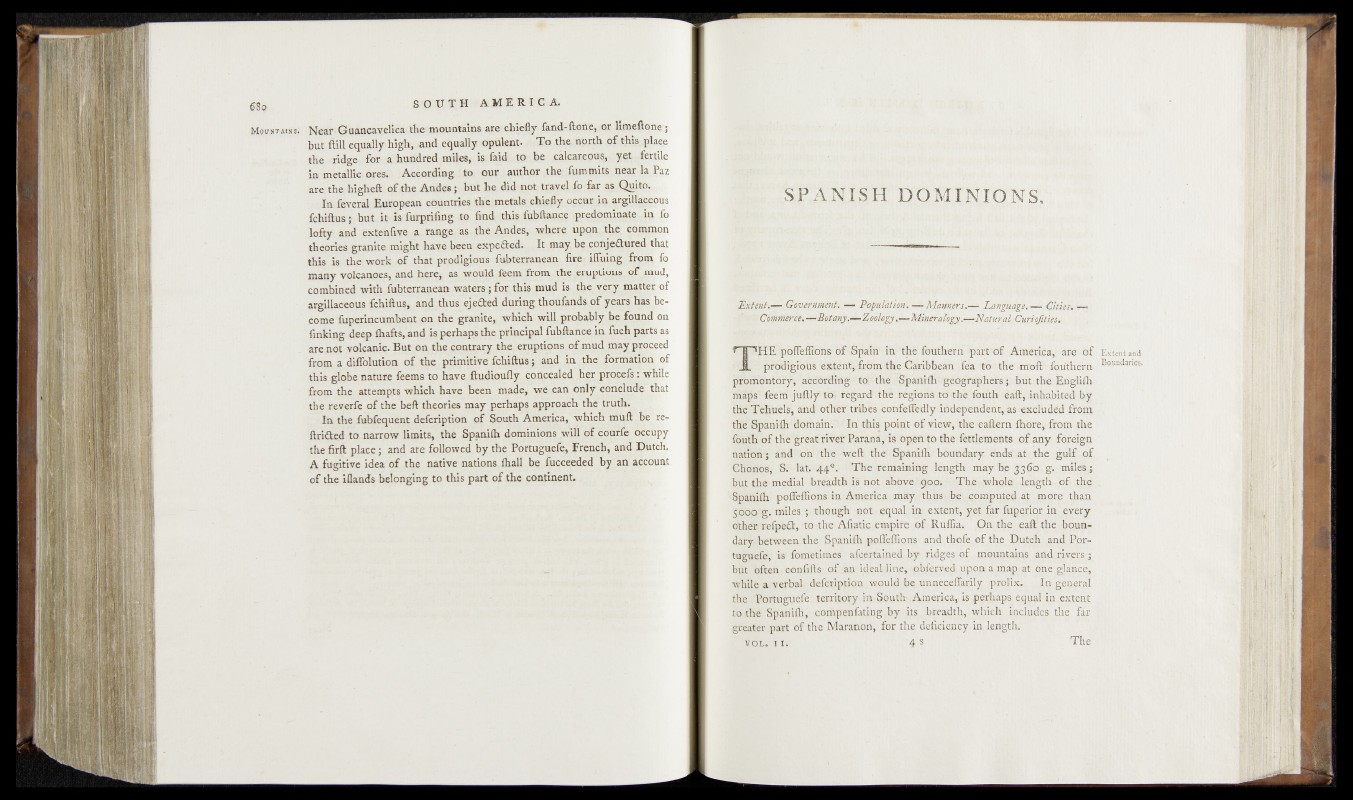
Near Guancavelica the mountains are chiefly fand-ftone, or Halftone ;
but ftill equally high, and equally opulent. To the north of tliis place
the ridge for a hundred miles, is faid to be calcareous, yet futile
in metallic ores. . According to our author the fummits near JaPaz
are the higheft of the Andes; but he did not travel fo;fa? as Quitp.
In feveral European countries the metals chiefly occur ;in argillaceous
fchiftus } but it is furprifing to find this fubftance predominate in fo
lofty and extenfive a range as the Andes, where upon the common
theories granite-might have been expefted. It may be conjedured that
this is the work of that prodigious fubterranean fire iffuing from^fp
many volcanoes, and here, as would Teem from the .eruptions of£jnud,
combined with fubterranean waters; for this mud is the very matter of
argillaceous fchiftus, and thus ejefted during thoufands of years has become
fuperincumbent on the granite, which will probably be found on
finking deep fhafts, and is perhaps the principal fubftance in fuch parts as
are not volcanic. But on the contrary the, eruptions of mud may proceed
from a diffolution of the primitive fchiftus; and in the formation iof
this globe nature feems to have, ftudioufly concealed her procefs: while
from the attempts which have been made, we can only' coMlude that
the reverie of the beft theories may perhaps approach the truth.
In the fubfequent delcription of South America, which muft be re-
ftridted to narrow limits, the Spanifli dominions will of courfe occupy
the firft place; and are followed by the Portuguefe, French, anjl Dutch.
A furtive idea of the native nations fhall be fucceeded by'an account
of the iflands belonging to this part of the continent.
SPANI SH DOMINIONS,
Extent.—1 Government. — Population'. .—^Sîatinfixs— E0ijj$faige. — Cities, —
’s^Cômmercs^PÏQtqnÿ.^Z<$^y.477Mivefcdop$^lfatyi^li£lj^ji0s‘^ ' i
THE pbfteffionsof Spain’ in thè -foüthernfpart^of America, are' of Extent and
prcMi^ms extent, from The Caribbean fila tô ffle ‘moftoifèdthérn Bàuni?ries>
pfomontoiy;- according-1’ fog the ISpa-niflitigeogfaphetS; but .the.Tyngl/h,
rfiags-ften? juftly to^ fègard 'thé regions t'dwthl 'fouth -daft, inhabited ,by
tHé Tehueîs^and other tribes coîrfeftbdly independent, asrexcliiddd froitl ,
the Spâniffi'teteaîn^In this point of view, the eafterri ihbre^fiojfi.the
iBdth'of the great river Parana, is 'bpën to the fettlementss,;of.any foreign
ftatibn; aftd ’-ofy the weft-the' Spanifh boundary ends at ;the, gidf ,o£
Oh&flcg/ SC lat. 44°ls 1’Tfie remaining:jdngth maybe mile's;
hut the medial breadth is not above hgpo. ;->rTbe;whole., length? j|gf|,d|jj .
•Sptaiflh poffeffions in America may -thus,* be nepmpqtcd atu-more than
Jbbq’g. miles ; ‘though pot,-equal, in extept-j yet fgr fine very
otha^Tefpe£t,'t0'’the Afiatie empire of RuflGa.. vOnt« e gaft’ thc^bouu-
dst^'feetweeh; the Spaniihr^pfieflionS and thoft^of the IJutd^and, Pof-
tügûêfë, is fometimes afcertained Uypr^gesof moqntain^ and rj^i&^
but often confifts of -an ideal line, ..obferved upon a map at one glançé., -
while a verbal- defcription -would be unneceflarily prolix. In general
the Portuguefe territory in South-. America, is perhaps equal in extent
to the Spanifh, compenfating by its breadth, which includes the far
■ greater .part of the Maranon, for the deficiency in length.
VOL. I I . ;4§ The